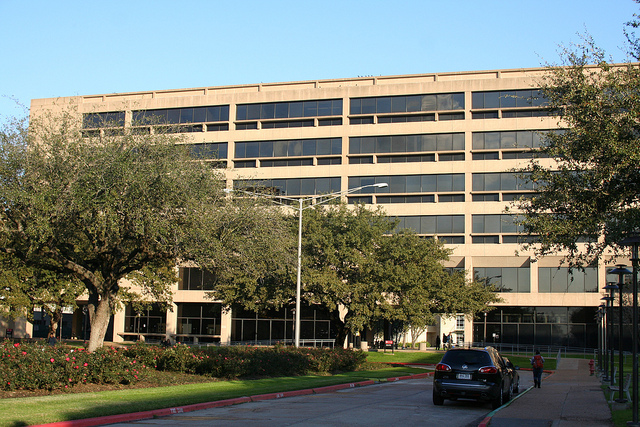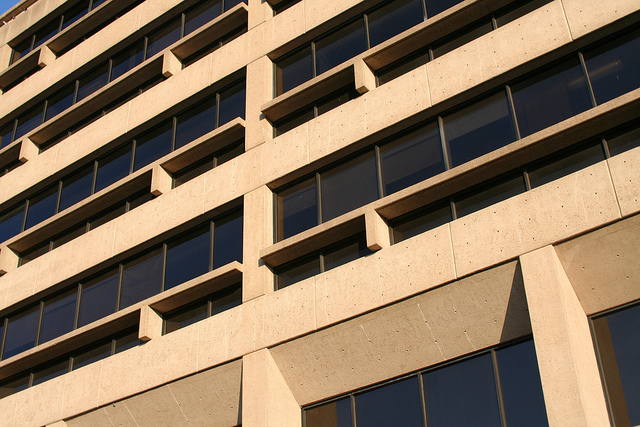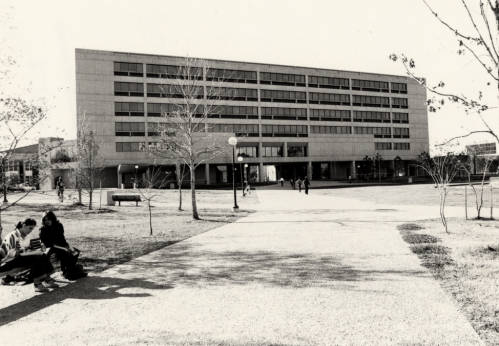
Approaching M.D. Anderson Library, you can’t miss Philip G. Hoffman Hall (PGH) nearby. Completed in 1974, it honors one of the university’s most important leaders and is a major landmark at the center of the campus. PGH and its neighbor, Agnes Arnold Hall, were designed by Kenneth Bentsen (UH 1952), a talented architect responsible for Houston’s Summit sports arena (1975) and other important buildings. PGH reflects the minimalist, modern style of the early 1970s. This style is not universally popular today, but formally this is a good building and I would like to show you why.

Philip G. Hoffman Hall from the east, behind Peter Forakis’ Tower of the Cheyenne. Photo by the author
Despite its large size, PGH is an elegant building. The strong horizontal lines visually lower its height. The façade is based on a grid, of course, but like a tartan plaid, the elements are interwoven, with some lines projecting and others suppressed. This is a subtractive composition where layers of the building are peeled away—slightly at the upper levels where, within each bay of windows, the projecting concrete fins provide a continuous bass note for the rhythm of repeating window mullions behind. There is a more pronounced cutting away at the lower levels; this culminates in the deep ground-floor gallery facing the plaza and the breezeway that penetrates the center. The slightly sculptural, three-dimensional facade prevents this from being just another boxy modern building.
Bentsen’s attention to detail can go unnoticed unless you look closely. The concrete construction is left exposed—a common practice at the time—but concrete can be finished in many ways, from very smooth to very rough. It is not always done as well as it is here. Bentsen specified a slight texture and a warm color that is pleasing to the eye. The wall surface is scored by the repeating pattern of small holes left by the concrete pouring process. They form an almost imperceptible grid of dots that enlivens the surface of the building. The holes have to be there, but the designer decides how to arrange them.
PGH is also impressive because of the way it is scaled to fit the plaza in front of it. The building occupies an important place at a campus crossroads, and visually it commands both the plaza and the broad avenue that it overlooks on the west. PGH should be understood at an urban scale, not a human scale: It is supposed to relate to the size of the plaza, not the size of the people in the plaza.
PGH is worth another look the next time you pass by. Records of this and other Bentsen buildings are housed in the Kenneth E. Bentsen Architectural Papers in the library’s Special Collections Department, where they are currently being processed.


